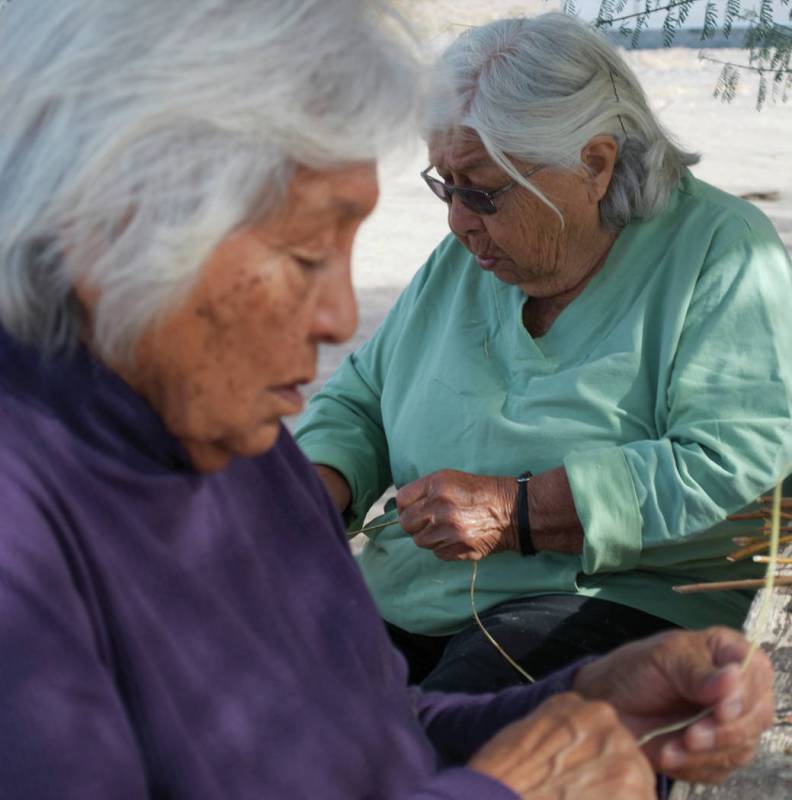
At 95, Pauline Esteves, of the Timbisha Shoshone tribe, remembers the traditional way her people lived before they were forcibly relocated by the National Park Service, so long ago that she is one of the few who still hold those first-hand memories. With the creation of Death Valley National Monument in 1933, life for the Timbisha people was forever altered.
The park service called this land that gave her people life a valley of death, a name Esteves said never made sense to her. As the decades passed, tourism grew around the Timbisha people while their numbers shrank. Once traditional ways of hunting and gathering where forbidden, and young people left home seeking work.
Esteves was among those who left as a young adult. She worked and studied in other parts of California but soon returned. She remembered the old ways, but she also watched and worked and studied the new ways, particularly the laws that now governed her homeland. Then she began, along with other tribal elders, to fight back.
The story of the Timbisha people and their struggle to earn federal recognition, the repatriation of their land, and, most importantly, the preservation of their culture, is the subject of a new documentary film called “The Women in the Sand.” The award-winning film makes its Death Valley premiere with a one-time screening on Saturday, Jan. 26 in Shoshone.
Filmmakers Steve Jarvis and Kate Fosselman were introduced to the story of the Timbisha people by tribal representative Barbara Durham through a talk she gave in the town of Shoshone several years ago.
“We were fascinated by their story,” Jarvis said. He and Fosselman wanted, after so many years in commercial work, to do something “that has some value, to pay it forward in some way.” The Timbisha story inspired them, and they began by seeking out Pauline Esteves to ask if she might be interested in working with them.
Esteves, her sister-in-law, Maddie Esteves, and another tribal elder, Grace Goad, agreed. Excited to begin, Jarvis went home and did what he’d been trained to do. He made story boards, outlines, time lines, schedules and more. Once filming started, he said, “I threw all of that out the window.” This project, Jarvis said, was like nothing he’d done. It would take six years, not just to gather the footage, but to sit with the elders and understand the story.
“Our job was to learn the spaces between the words, to learn the feelings,” Jarvis said. “We didn’t come into this knowing that.”
The result, he said, was approved by all three of the elder women, though it wasn’t always an easy process. He made mistakes, Jarvis said, and learned as he went.
The Timbisha elders in “The Women in the Sand” own partial rights to the film, Jarvis said. Proceeds from the Shoshone screening and other revenue go to benefit the Tupippuh Project ( Homeland Project), “a nonprofit Native American organization dedicated to the protection of the environment and preservation of the language, arts and cultural traditions of the Timbisha People.”
“The Women In The Sand” makes its Death Valley premiere in the Flower Building on Highway 127 in Shoshone on Saturday, Jan. 26, at 3 p.m. The film, narrated by Edward James Olmos, is a little over an hour long. The event is sponsored by the Shoshone Museum Association and includes a question-and-answer session with Jarvis and Fosselman, the film’s producer, Ben Goodman, and elders from the Timbisha Shoshone tribe. Refreshments will be served.
For information call the Shoshone Museum at 760-852-4524, or visit the museum’s Facebook page.
Robin Flinchum is a freelance writer and editor living in Tecopa, California. Her book, “Red Light Women of Death Valley,” was published recently.